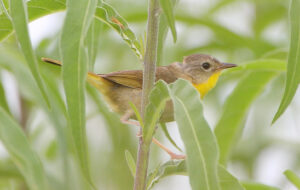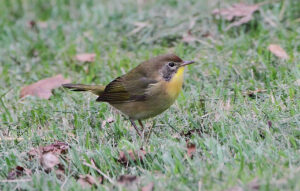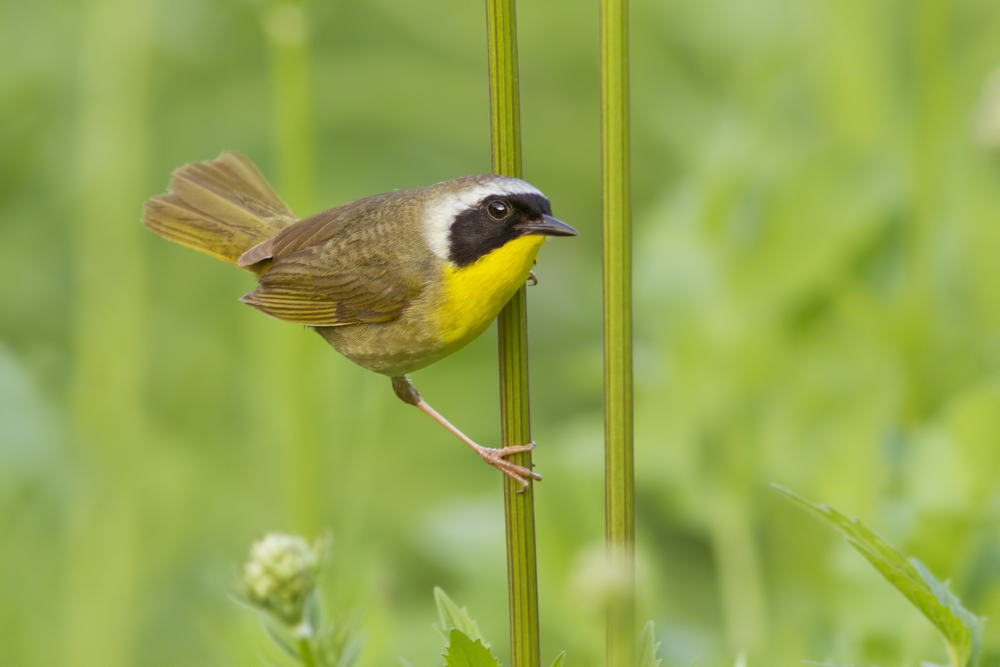Common Yellowthroat, Geothlypis trichas
Bill Rowe
Summer is here, and for the next two months we will focus on summer birds that you might see in the course of your June and July outings. We could fill that whole schedule with only half of our nesting warblers, but in the interest of variety, we’ll stick with just one for now. It’s the Common Yellowthroat, the most abundant warbler statewide except for densely forested areas, and almost unique in that it tends to remain at eye level or below in its preferred habitat of marshes, rank grass and weeds, low shrubs, and small trees. As it skulks about in this setting, it may remind you of a wren rather than a warbler; the best way to get a good view is to listen for a singing male and try to find him perched out in the open. The female, harder to see and sometimes to identify (see below), builds the nest, which is a cup of grasses woven and hidden near the ground. There are some closely related kinds of yellowthroats south of the border, but this species is the only one north of Mexico, with a vast range covering the better part of the continent except the far north and some portions of the western and southwestern U.S. Across this range it shows quite a bit of variation in color details and also in its song, which is famously transcribed as witchity-witchity-witch but may be faster or slower, or have more or fewer syllables, in different regions.
IDENTIFICATION: A very small bird with the typical thin, short bill of a warbler. Adult males and females share the pattern of a bright yellow throat and undertail area, separated by a colorless grayish-brownish belly. The male, however, also has a broad black face mask that makes him unlike anything else, whereas the female is simply a solid olive-brown above, including the head. Immature males show the beginnings of a dark mask, and immature females may be less yellow or even just buff-colored on the throat. To some extent you can use location (low, in thick vegetation) as an identification aid versus other warblers. Become familiar with the song and you’ll be surprised how many yellowthroats you find, whether or not you can actually see them.
ST. LOUIS STATUS: A very common summer bird wherever it can find sufficient marshy, grassy, or weedy cover for nesting. Many yellowthroats arrive in April, and many remain through September and occasionally beyond. Like most insect-eating birds, it is not usually here in winter, although a very few linger as late as December and may turn up on Christmas Bird Counts.
Learn more and listen to the songs and calls of Common Yellowthroats here.


Adult female
Photo Credit: Al Smith
Immature male
Photo Credit: Al Smith




